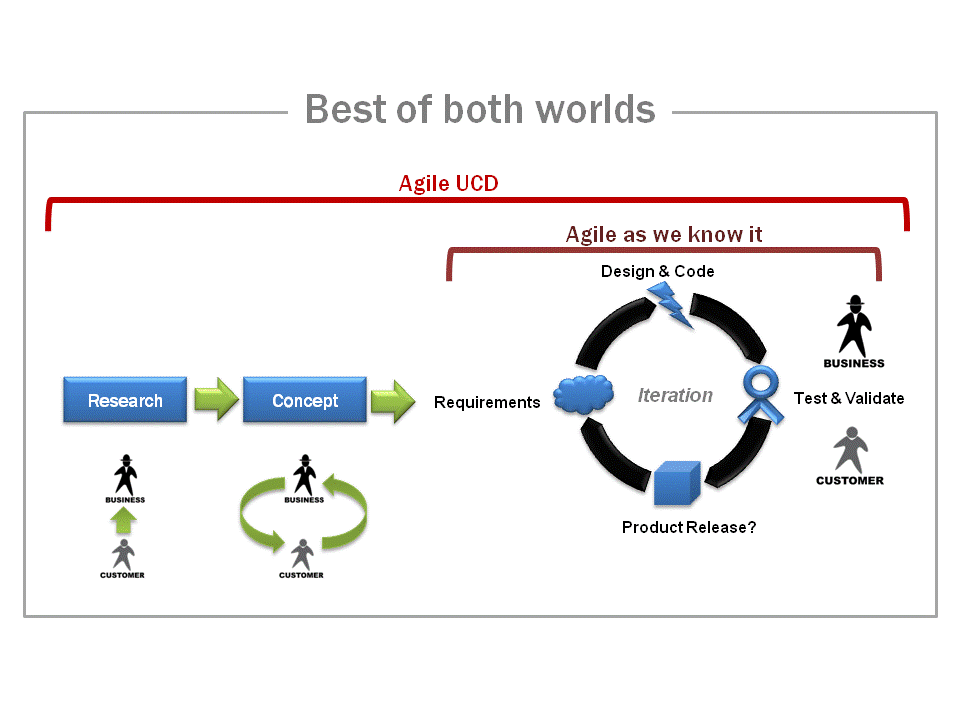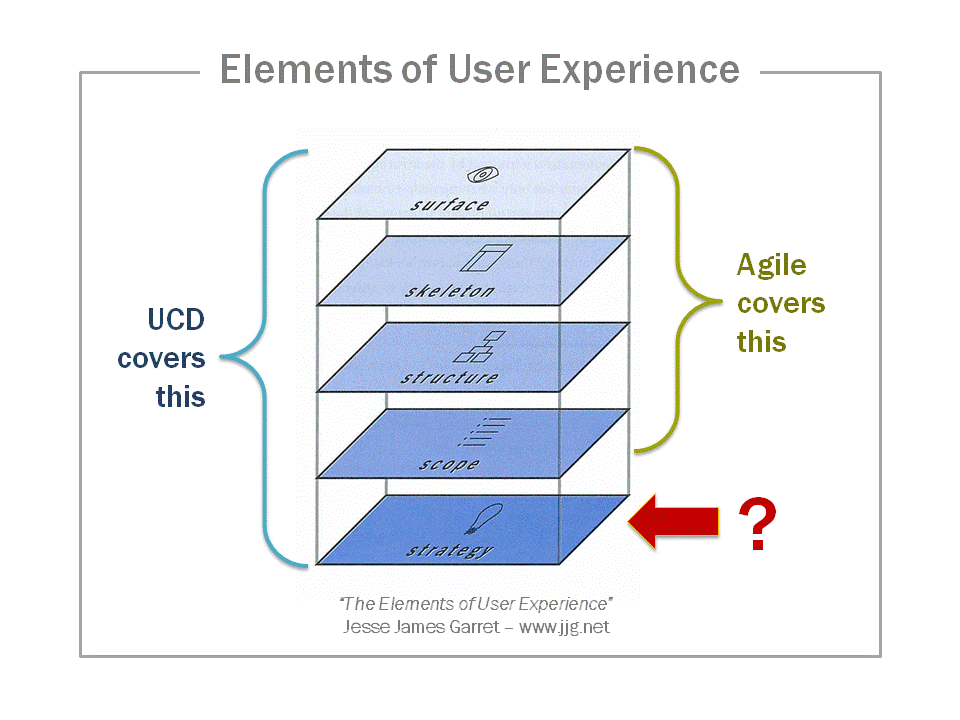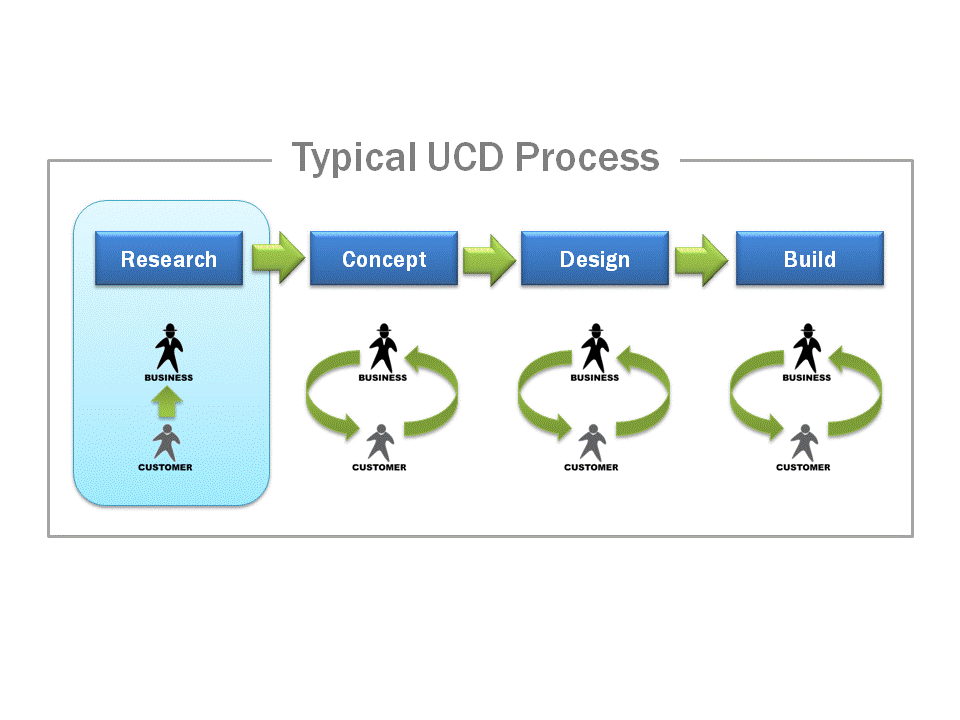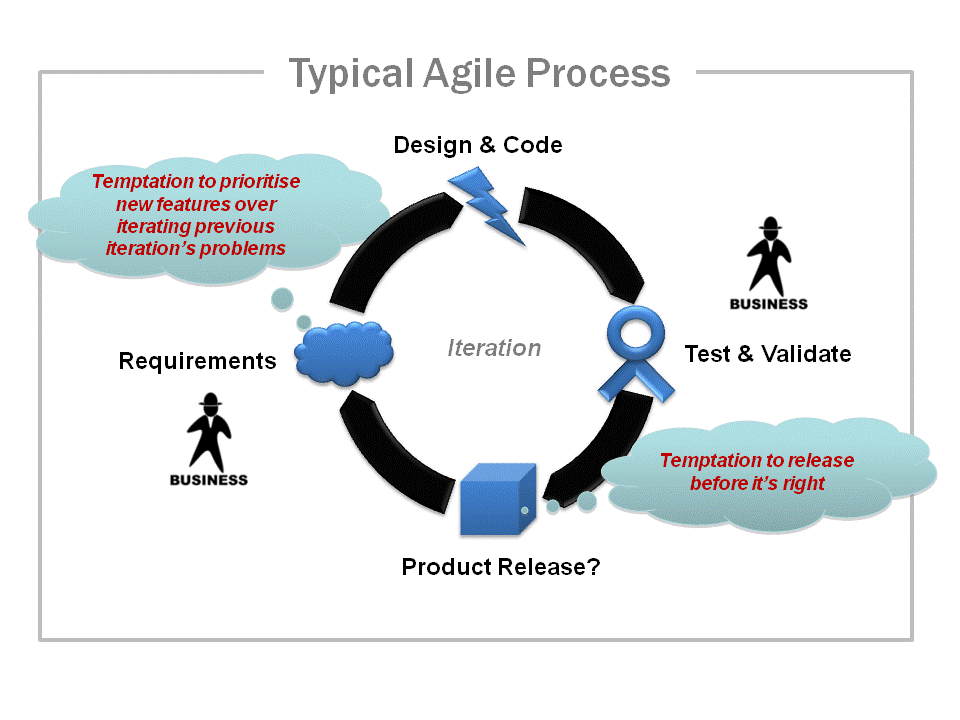Where did Agile come from?
Envisioned by a group of developers, Agile is an iterative development approach that takes small steps toward defining a product or service. At the end of each step, we have something built that we could release to the market if we choose to and therefore it can assure some speed to market where waterfall methods usually fail. Agile prefers to work out how to build something as we go, rather than do a waterfall style deep dive into specification and then finding out we can’t build parts of the spec for some reason e.g. a misjudgment of feasibility, misjudgment of time to build, or changing requirements.
A group of developers such as Kent Beck, Martin Fowler and Ken Schwaber got together to come up with a way to synthesize what they had discovered was the most effective ways to develop software – The Agile Alliance was born. It released a manifesto2 to describe its tenets and how it differs from waterfall methods.
Agile can be thought of as a risk-management strategy. Often developers are approached directly by a client who does not know what a user experience designer, information architect or user interface designer is. Roles such as these usually interpret what clients want and translate it to some kind of specification for developers. Without this role, it’s down to the developer to work out and build what the customer wants. Because Agile requires a lot of engagement with the client (i.e. at the end of every iteration, which can be as little as a week) it mitigates the risk of going too far toward creating something the client doesn’t want. As such, it is a coping mechanism for a client’s shifting requirements during development as they begin to articulate what they want. To quote the Agile Manifesto’s principles “Welcome changing requirements, even late in development. Agile processes harness change for the customer’s competitive advantage.
Why do people rave about it?
At the heart of what makes Agile attractive is the possibility of quicker return on investment for development effort, because we can release software earlier than we would have otherwise. In the short term, this is typically borne out. In the long term it can be too, though only when the team hasn’t fallen victim to temptation (more on that later). Agile is also good at generating momentum because the iterations act as a drumbeat to which the team marches toward manageable deadlines. The regular "push" to finish a sprint ensures that things move along swiftly. Agile is also good at avoiding feature bloat by encouraging developers to do only what is necessary to meet requirements.
Because it emphasizes face to face contact for a multidisciplinary team, Agile tends to encourage contribution from different perspectives. This is generally a positive influence on, pragmatism, innovation and speed of issue resolution. The team is empowered to make decisions as to how requirements should best be met.
The Minefield
In of itself, Agile does a good job of flexing to the winds of change. But one has to ask whether it was devised to treat a symptom of the larger cause: the business doesn’t know what it wants. While Agile enables the development team to better cope with this, it doesn’t solve the problem and in most cases creates new problems.
Mine 1: An unclear role for design
In the best cases of business approaching developers to build some software, some of those developers may have design skills. But that’s not a particularly common scenario. Many developers have also had bad experiences with designers who don’t know what they’re doing. It took a long time for the design profession to come to grips with designing for complex systems and there is still a deficit of expertise in this field. “Business people and developers must work together daily throughout the project” is another principle of Agile. Where does the designer fit into the frame?
Mine 2: The requirements gathering process is not defined
Agile accommodates design activities from the perspective of a developer. It tends to shoe-horn these activities into their view of the world where requirements fall from the sky (from the business or customer who is assumed to be all-knowing) and takes for granted that they are appropriate.
According to Ken Schwaber, SCRUM intends to be a holistic management methodology and leaves space for activities other than programming to occur within the framework of iterative cycles. But when organizations adopt SCRUM, too often the good parts of a waterfall process like research and forming a high-level blueprint for the overall design become the proverbial baby thrown out with the documentation bathwater. As the Agile Manifesto says, “Working software over comprehensive documentation.”2 Many latch onto this and don’t want to do any type of documentation that might outline a vision, even if in a rudimentary sense.
Mine 3: Pressure to cut corners
Implementations of Agile that put design activities within the same iteration as they must be developed, ensure designs are achievable in code. But they also put tremendous pressure on the experience design team to ‘feed the development machine’ in time enough for them to implement their vision. This can and does lead to impulsive design. So, what’s wrong with that? Well, nothing if you’re not adhering to user centric principles which suggest you should test ideas with end users before committing them to code.
Some assert that there are plenty of examples of best-practice interfaces to copy out there. So, why reinvent the wheel? Surely we can save time that way? Sometimes they’re right, but how will we know which best-practice interface works best in context with the user’s goals, with no time to test with the user? How can we innovate by copying what already exists? Before Google reinvented internet search, other search engines assumed a status quo which behooved the user to learn how to form proper search queries. It was institutional knowledge among the other search engines that this is how searching was done and customers simply had to learn to use it. Most people’s search results were poor at best. Then Google came along and realized what is now obvious. People just want to find what they’re looking for, not learn how to drive a search engine first. I’m not suggesting the other search engines could not have done what Google did sooner, but I am pointing the finger at a mentality which meant they missed the opportunity. Interestingly, Google is not known for its designers. It’s mainly a development house, but lots of those developers can clearly put a design hat on too.
There is absolutely nothing wrong with using Agile to produce results quickly; that is, if you don’t intend to release them on your poor, unsuspecting user without some usability testing. Just don’t be fooled that this is going to save you a lot of time if you want your new product to be right, because you will have to iterate to arrive at an appropriate solution. Alan Cooper has argued that this creates a kind of ‘scar tissue’ where code that has to be changed or modified leaves a ‘scar’ that makes the foundations of the program unsound.4
Mine 4: The temptation to call it “good enough”
Invariably when we have release-ready working code at the end of each cycle, even if it’s sub-optimal, there’s a strong temptation to release it because we can. Agile condones releasing whatever we have so long as it works. Sometimes, that means doing what we can get away with, not what is ultimately best for the user. Equally, if we do decide that a feature isn’t right yet, it’s amendments get fed back into the requirements backlog where temptation strikes again. Should we spend time in our next iteration on a feature that we’ve already got a version of? Or shall we develop something new instead? Too often, the rework gets left in favor of exciting new stuff. An so on we go building a product full of features that don’t quite meet the bar.

Mine 5: Insufficient risk-free conceptual exploration time
Iteration “zero” (i.e. a planning and design iteration prior to the first development iteration) can be used to do this and other planning activities. However, depending on how long this iteration is, the level of rigor applied to exploration may be insufficient. An argument used by some Agile practitioners asserts that a working example of a solution is the best way to validate whether it is the right one through exposure to the market. This ‘suck it and see’ approach bypasses an activity called “concepting.” Concept activities dedicate time to sketching different solutions at a high level and validating them in the rough with users before digging into detailed design or code. “Suck it and see” would have us just build it, launch it and see if it flies. This way, we’ve wasted time building something we will probably have to take apart or rebuild. The counter argument is: if it took as long to build as it would have to research and design before laying a line of code, then we break even. This statement is a stretch in practice because development itself usually does take longer than well-managed design research and conceptual exploration. Also, there has to be some level of design regardless of which methodology is used, and this adds days to the timeline.
Mine 6: Brand Damage
Let’s just say that design and research takes the same amount of time as development for argument’s sake. In the worst case, we completely miss the mark with the non-researched and designed solution and we have to start all over again. Then we’re back to the same total duration after developing it a second time, but there’s no guarantee we’ll get the solution right the second time either. All the while we’ve repeatedly foisted a botched product design on our users and adversely affected our brand. Many companies succeed on the back of their reputation for producing consistently appropriate products and services. When a company releases a flawed product or service, then their image in the customers mind (i.e. brand) is tarnished. Brand damage takes far longer to mend than it does to make. Software creators that fall victim to the temptation of "good enough" and fail to innovate through conceptual exploration put their companies revenues at risk. In a competitive market, repeated failure to meet user needs well leads to serious brand and subsequently financial repercussions, as other companies who do get it right take the business.
Agile is good for refining, not defining.
If you have an existing product that you want to develop to the next level, then Agile in its truest sense works because you have a base upon which to improve. This means that if you know what your requirements are and these have been properly informed with user research, comparative analysis, business objectives, and analysis of what content you have and what you can technically achieve, then Agile alone can work well.
But spending money on software development without a plan of what to build is like asking a construction crew to erect a tower with no blueprint. Some level of plan is necessary to avoid a Frankenstein of each individual’s perspective on the best design solution.
User Centered Design
UCD requires iteration – design, test with users, refine, test with users again, refine… repeat till it’s right. This is where Agile and UCD can work brilliantly together. Agile really is about presuming you’ll need to change things, and that’s a good thing when it comes to refinement.
Uncovering requirements to form a strategy
User Centered Design (UCD) is not about answering requirements alone, but also includes defining requirements. When we practice UCD end-to-end, we pretend we know little. Little about what the solution to a problem should be; little about what the problem actually is because assumptions close us off to new possibilities. We prefer to allow some design research to create a viewpoint and then form a hypothesis as to what we might build. In this regard, we cross into the realm of product managers, producers, program managers, business analysts and the like, trampling toes with gay abandon and meeting resistance all around. Facing confinement to defining the boring old business need (distinct from the user or customer need), these folks would prefer we constrain our UCD work to usability testing on designs meeting the requirements they set out. They’d prefer we stick to just helping with development… and if we can do that quicker using Agile? Wahey!

Is it always appropriate to do extensive research before starting design? That’s a good question and one that Jared Spool’s Market Maturity Framework5 helps answer. Sometimes, just getting something off the ground, regardless of how precisely we meet user’s needs with it is all we can afford to do. Once we graduate out of this "Raw Iron" stage into "Checklist Battles" focused on getting the right features and then beyond, research is a core ingredient to putting our feet in the right place.
After researching what the user and business requires, we can make the “Strategy” tier of Jesse James Garret’s Elements of User Experience3which underpins everything we do during the project. Do this well, and you really shouldn’t come up with something that’s fundamentally wrong. Agile doesn’t account for this beyond a planning phase (i.e. iteration zero), which may well define a strategy of sorts. But does it really define the correct strategy? Surely, that’s created through careful consideration of three things:
Empathetic qualitative research that uncovers the user’s context, needs, goals and attitudes i.e. user requirements. Cooper suggests that the customer doesn’t know what they want and advocates a role of interaction designer as requirements planner.4 This would avert building to the wrong requirements in the first place, but the time to do this must come into the development lifecycle somewhere. It involves talking to users, preferably visiting with them in their environments to create experience models and user personas.
A thorough appreciation of what else in the big wide world exists in terms of products, features and technology that can be emulated somehow (not necessarily addressing a similar situation to ours).
A clear articulation of the business problem, objectives, success measures and constraints. Business people sat in a room discussing what they think should be done must be informed by all these things if the right strategy is to emerge. Agile doesn’t preclude that kind of consideration, but it does not mandate it either.

Concept Development
If we manage to built something usable and reasonably intuitive without research or strategy, did we succeed? Most MP3 players fit this bill but none took off like the Apple iPod. Leaving interface usability aside, the iPod had a service concept behind it which included digitizing, replenishing and managing your entire music library with iTunes. This was part of the iPod concept from the outset and in combination with good marketing and design, continues to eclipse the competition over seven years later. But that concept needed to be sketched and iterated at some point. If we don’t explicitly build this into our Agile methodology, we can miss that thinking time.
The best of both worlds
UCD can be too documentation-heavy, isolated and risky but Agile needs help with defining requirements and concept development. How can Agile and user centric principles work together? First let’s understand what works well with Agile and not so well with user centered design. In this regard, the work that user centered design calls the ‘design’ phase can produce buckets of documentation which isn’t read, describing interfaces specified in isolation which may not be feasibly coded in the time allotted to them. So, doing detailed design is best done in conjunction with the development team and in a way where resulting interfaces can be tweaked as you go.

A shared vision of the interaction fundamentals
In good software development, a conceptual interaction model that has been thought through beforehand, outlines how the user navigates the system, performs tasks and uses tools in generic terms, i.e. not each and every navigation label, task or tool but rather the interface and interaction patterns that will persist. This produces something rudimentary to test with users to see if we got the big picture right. Following this roadmap sketched on the back of research and concepting prior to development activity, ensures consistency and cohesiveness when each component is coded separately to each other later. In many cases, the concept will need iterating to accommodate lessons from the journey. But we’ll at least have some indication of direction at a macro scale. Then, when in the midst of Agile iterations working out the details alongside our developer brethren, a level of expertise and experience is required of the designer because what we design will be built before we’ve had a chance to second-guess ourselves. Domain knowledge and an understanding of interface paradigms that work is also a big help. But to build new projects from scratch without a shared vision is a mistake.
Risky interfaces that are new or significant improvements on what has been seen before, are best tackled as design-only activities in a sprint prior to when they will be developed (i.e. do involve developers, don’t try to produce code). This circumvents the pressure to deliver something before proper thought, reflection and user testing, which ensures you’re not wasting time and effort. Sometimes most of the product will be done this way and that’s fine so long as developers and designers are still working together and talking every day. The first development iterations are an important time for the developers to lay the architectural foundations based on the vision. Designers should use this time to get a jump on any high-priority tricky interfaces so the development team isn’t waiting for something meaty to start on when it comes time to build features.
Most important to success, the business needs to accept that some things won’t be right the first time around and commit to iterating them prior to release i.e. not be led into the temptation to release something that’s not right yet.












